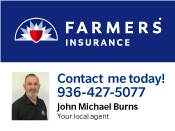December 22, 2017 - I was falsely accused last week. A distraught homeowner called about the hordes of insects that had come into her house. They were Lady Beetles looking for a place to overwinter.
 When I told her they are a common nuisance and could simply be vacuumed up or swept out, she told me that I didn’t understand, she had a “serious infestation!” So much was her distress that my ability to comprehend large numbers of insects was called into question!
When I told her they are a common nuisance and could simply be vacuumed up or swept out, she told me that I didn’t understand, she had a “serious infestation!” So much was her distress that my ability to comprehend large numbers of insects was called into question!
It is true that homeowners may be seeing numerous lady beetles invading their homes this time of year. Lady beetles are insects that are considered beneficial. But they are not invading your home to cause problems, only to stay warm. The lady beetle does not chew or bore holes in walls nor do they eat carpet or any food in the pantry.
While they cause no harm, their overwintering habits inside people’s homes causes them to be a nuisance.
Lady beetles have been considered one of our most beloved insect. They are in stories, a good luck charm for some, and I’ve even seen kids dress up as one for Halloween. You’d never see a kid dress up as a fire ant or termite!
Locally we call them Lady Bugs. If you grew up and don’t remember seeing as many, you are absolutely correct.
 There is a native Lady beetle that are harder to locate and a multitude of non-native insects that are native to Asia but in the past few decades have spread to many areas of the United States.
There is a native Lady beetle that are harder to locate and a multitude of non-native insects that are native to Asia but in the past few decades have spread to many areas of the United States.
This beneficial (yet sometimes controversial) Asian relative was released in the United States as early as 1916. More were released in the late 1970’s and early 1980’s. It has taken years for the populations to spread, but now large populations are found in many areas of the south, northeast, Midwest, and as far north as Oregon and Washington.
Adult beetles can have a variety of colors and spots. The larvae are soft-bodied, gray and orange, and covered with rows of raised black spots.
The lady beetle is an effective and natural control for harmful plant pests such as aphids, scale, and other soft-bodied arthropods. One adult lady beetle may eat over 5,000 aphids during its lifetime.
A few folks ask if they bite. Well, sort of.
Lady beetles have mandibles, a jaw-like part of their mouth that they use to capture and eat their prey. And while they are not out to bite (like a fire-ant) or sting (like a hornet), they can certainly give someone a good pinch on the skin with those mandibles!
The lady beetle also has a defense mechanism. If agitated or disturbed, the beetle’s reaction is to “reflex” bleed in which a yellow fluid with an unpleasant odor is released from the leg joints. This reaction helps prevent predators, such as birds, from eating the lady beetle.
This fluid can sometimes stain walls and fabrics.
The lady beetle is attracted to lighter colors such as whites, grays, and yellows. They enter homes through cracks and crevices. During warm winter days and early spring, the lady beetle may become more active searching for an exit.
No “control” of these beneficial insects is warranted as is for termites or perhaps fruit flies. Prevent them from entering the home by caulking exterior cracks and crevices. Sweeping and vacuuming are effective means of removing these insects from the living area.
Article by Lane Dunn, County Extension Agent for agriculture and natural resources for Shelby County. His email address is jldunn@ag.tamu.edu
Educational programs of the Texas A&M AgriLife Extension Service are open to all people without regard to race, color, sex, disability, religion, age, national origin, genetic information or veteran status. The Texas A&M University System, U.S. Department of Agriculture, and the County Commissioners Courts of Texas Cooperating.









